METRONOME/ A rich-client application framework

Metronome™ enables rich-client application developers to create powerful, easy-to-use interfaces by freeing them from concerns about low-level functionality common to all applications. This enables a shorter and less costly development cycle compared to home-grown practices currently used. Metronome provides a common substrate for application development that encourages code reuse by providing a common set of development […]
PERSONA/ A graphical tool to develop virtual characters
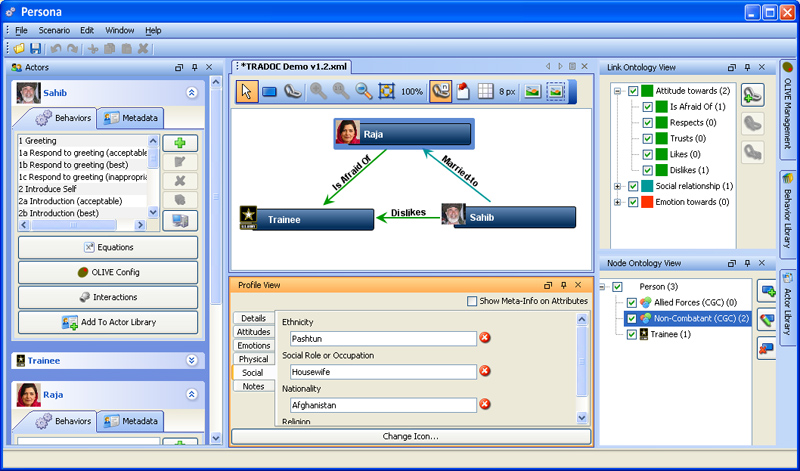
Persona™ is an easy-to-use graphical tool that allows trainers to rapidly develop and execute sophisticated, interactive behaviors for virtual characters. This enables trainers to efficiently create new training scenarios or to adapt existing scenarios based on the skills and needs of a particular person or group being trained. Persona was originally developed under an effort […]
DRIVE™
The Situation Iterative practices are standard for visualization and user interface design, demonstrating impressive benefits in both usability and effectiveness. Iterative design is particularly applicable to user-centered design approaches (like Cognitive Systems Engineering), where analyses of human-machine system performance depends on assessing the impact of new or modified technical artifacts upon existing workflows. These analyses […]
Connect™

The Situation Network science and analysis, including social network analysis (SNA), uses a number of techniques for deriving insight into the structure and inner workings of organizations by considering the relationships among individuals and other entities. Network analysis has gained traction in recent years as being a powerful tool for analyzing groups — for example, […]
Remote Exercises for Learning Anger and Excitation Management (RELAX)

The Situation Substantial numbers of Veterans and Service Members suffer from debilitating conditions such as posttraumatic stress disorder (PTSD), substance abuse, and anger management disorders. Although the Department of Defense and the Department of Veterans Affairs offer proven treatment options for these conditions, practical issues such as availability and transportation difficulties prevent many patients from […]
VisionKit®

Computer vision systems enable computers to automate repetitive visual tasks, freeing human experts to concentrate on higher-value activities. VisionKit, Charles River Analytics’ library of computer vision components, allows developers to rapidly prototype vision systems using our advanced technology. The components are written in C++, and are intended for real-time performance, while still offering a developer-friendly […]
Figaro
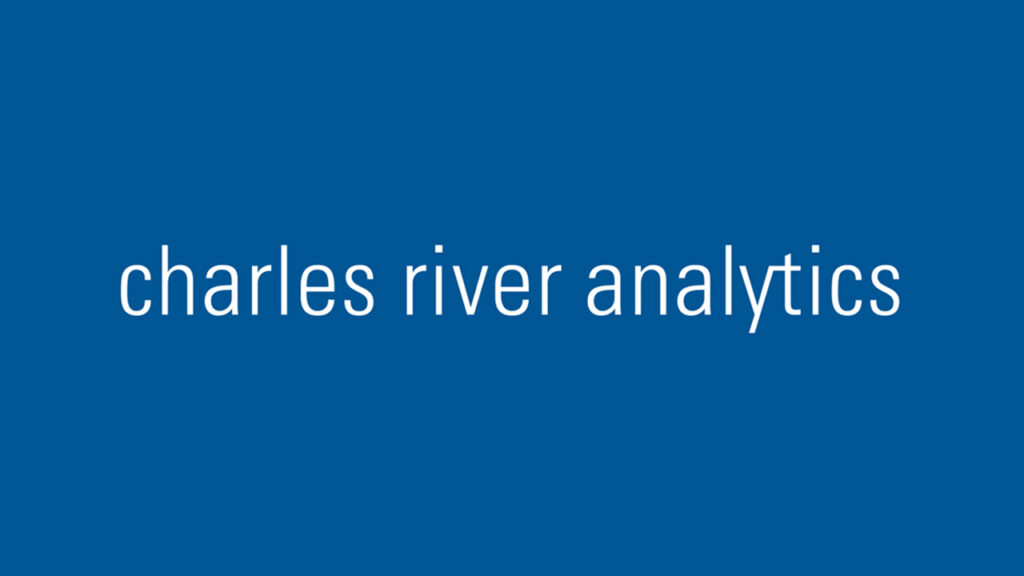
A Free, Open-source Probabilistic Programming Language for Probabilistic Modeling Developing a new probabilistic model requires developing a representation for the model and a reasoning algorithm that can draw useful conclusions from evidence, which can be challenging tasks. Furthermore, it can be difficult to integrate a probabilistic model into a larger program. FigaroTM is a probabilistic programming […]
Perceptual Sensing and Information Displays
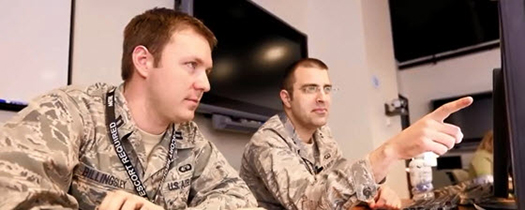
Perceptual Sensing and Information Displays The US Air Force is exploring how to improve the command and control (C2) of intelligence, surveillance, and reconnaissance (ISR) capabilities for air operations. Collection managers, who plan and execute ISR missions in Air Operations Centers (AOCs), must consider a wide range of information before making decisions. For example, when […]
Laparoscopic Surgery Training System (LASTS)

The Problem Maintaining readiness of critical surgical skills is vital to the successful care of military personnel both on the battlefield and at home, but these skills may decay after periods of non-use. Of particular concern are those skills needed for procedures performed routinely while at home, but typically less so while on the battlefield. […]
Mixed-Initiative Control of Automa-teams (MICA)
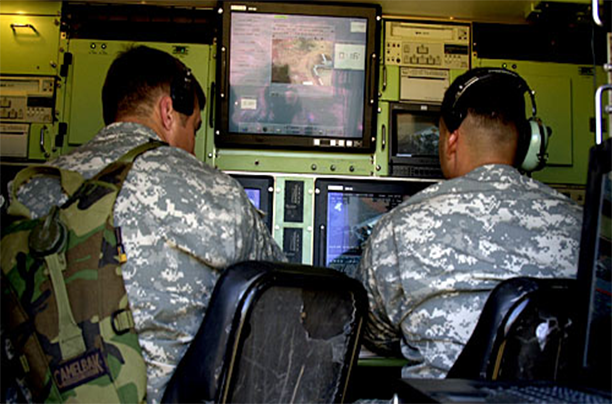
Increasing the number of autonomous vehicles controlled by individual operators The Situation Experience in Operation Iraqi Freedom demonstrated the military advantages of unmanned aerial vehicles (UAVs). For example, the single Global Hawk that operated in Operation Iraqi Freedom flew only 3% of all aircraft imagery-collection sorties and 5% of high-altitude missions, but collected data […]
Augmented Training by Monitoring, Extracting, and Decoding Indicators of Cognitive Load (MEDIC)
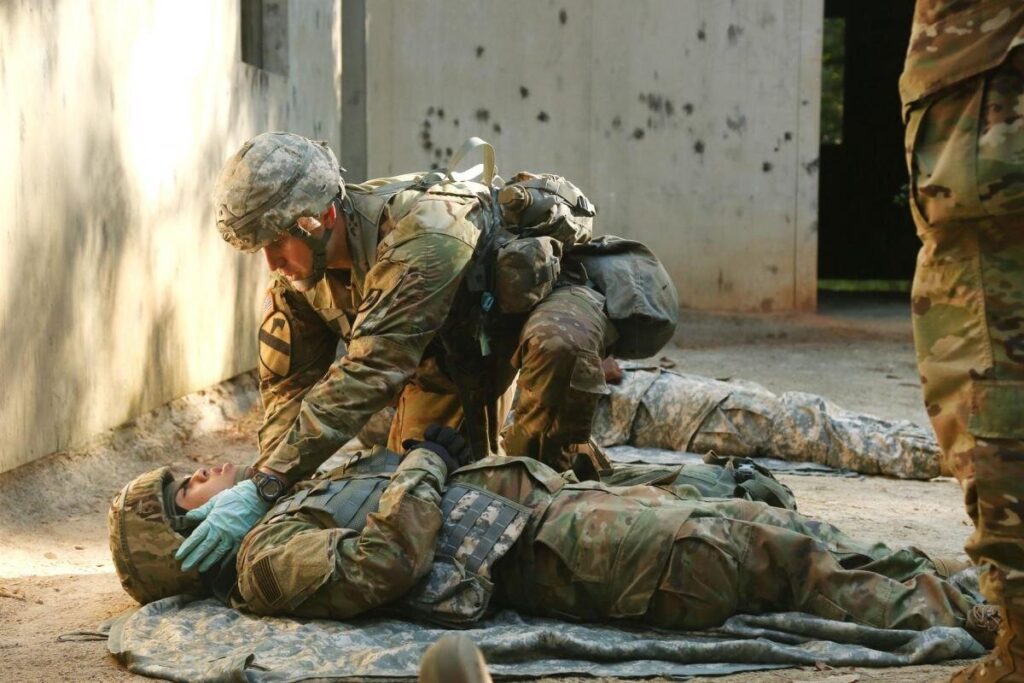
The Situation US military medical personnel may be deployed to operational environments where their success in saving lives depends on their ability to act quickly and effectively, both as individuals and as teams. Therefore, effective training must go beyond individual skills to include interactions among team members, and how those interactions transfer to operational environments. […]
robot_localization

The Situation A key problem for an autonomous mobile robot is determining its position in its environment. Robots are typically equipped with a wide array of sensors, each with its own error characteristics. By fusing the data from each of these sensors, the robot can determine its location with a high degree of accuracy. The Robot […]
Socio-Cultural Assessment from Passive Sensing (S-CAPS)
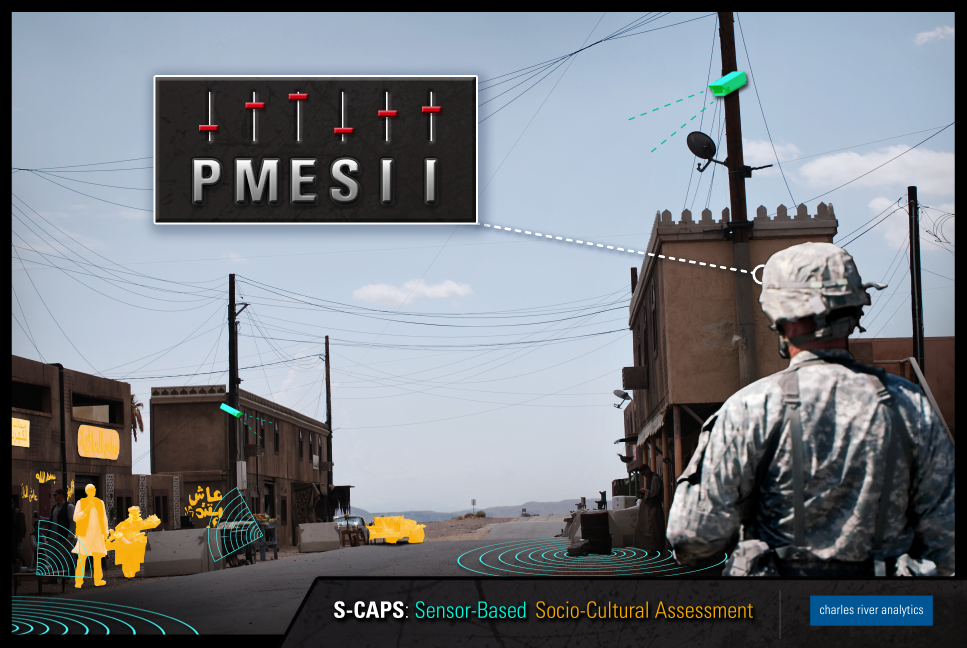
The Situation In recent years, warfare has focused on counterinsurgency operations, generating an increased need for socio-cultural intelligence, particularly in influence operations and civil affairs. To date, battlespace preparation and mission preparation in these scenarios have relied on the opinions and information of subject matter experts (SMEs) with broad and deep knowledge of a particular […]
Microgames for Acquiring and Rehearsing Cognitive Schemas for Perception (MARCS)
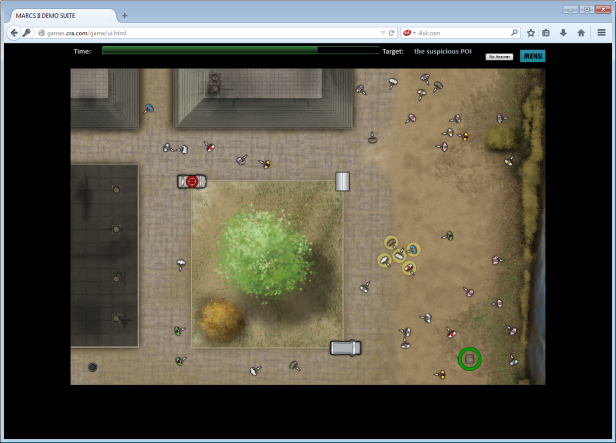
The Problem The Combat Hunter Program, developed by the US Marine Corps, was developed to help Marines defend against attacks from snipers, terrorists, and other adversaries using veiled or stealthy forms of attack. The existing program is effective in training Marines to readily understand behaviors in a new environment, and to identify anomalies in those […]
Smart Information Grid for Operations Assessment
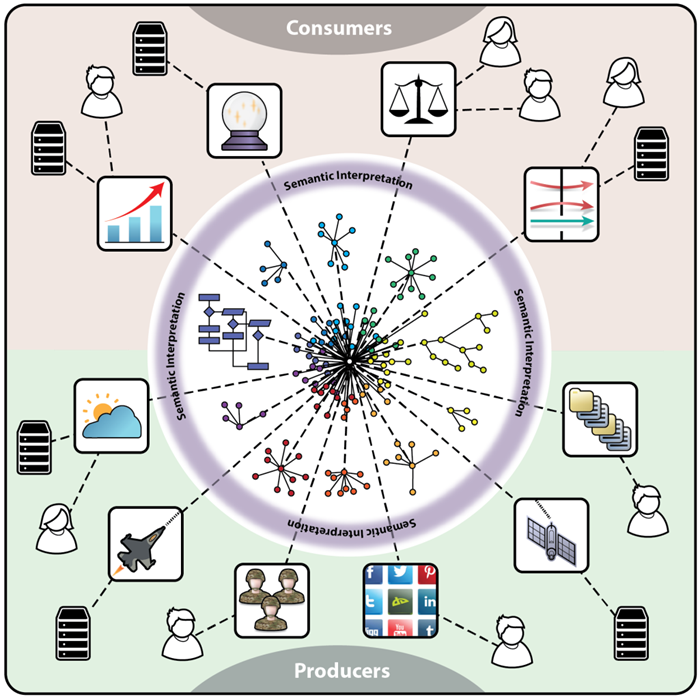
The Situation Missions are never static. Commanders must respond to unanticipated battlefield changes. Mission success depends on continual operations assessments to ensure the current plan is still effective, and, if not, to trigger a readjustment of the plan. Military operations, however, are becoming increasingly complex and challenging in large part because of the application of […]
Village Stability Operation Modeling

The Situation Counterinsurgency (COIN) combines security, governance, and development operations. While the US military is excellent at conducting short-term, security and tactical operations, they sought assistance in understanding and implemening long-term and strategic governance and development portions of COIN through Village Stability Operations (VSO) and Afghan Local Police (ALP) in Afghanistan. For this expertise, the […]
Advanced Mission Planning Tools
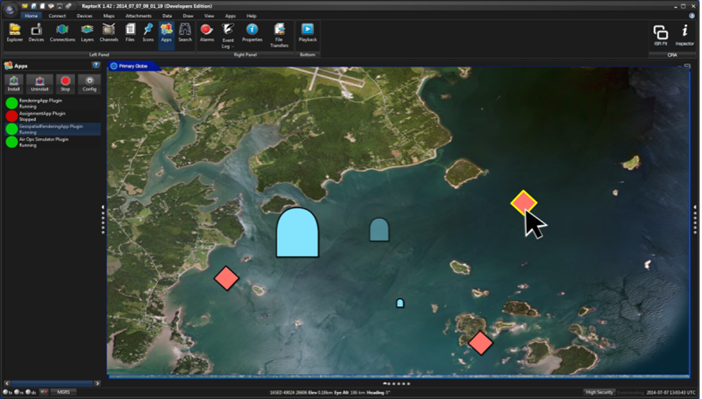
The Situation Operators of unmanned systems face numerous challenges responding to evolving mission needs or changes in the environment, such as dynamic weather patterns, traffic in congested air or sea spaces, or pop-up threats. Frequent vehicle path re-planning and re-tasking tasks often generate a significant cognitive load and introduce risk for control error. Although significant […]
Content Retrieval and Extraction for Advanced Tutoring Environments

CREATE reduces the time and effort required to retrieve raw lesson content from document repositories The Need for Intelligent Tutoring Technology The US military is one of the largest educators in the world. Military personnel spend a lot of time in training activities throughout their careers. The high cost and importance of training has prompted […]
Vibrometry Interactive Build Environment (VIBE)
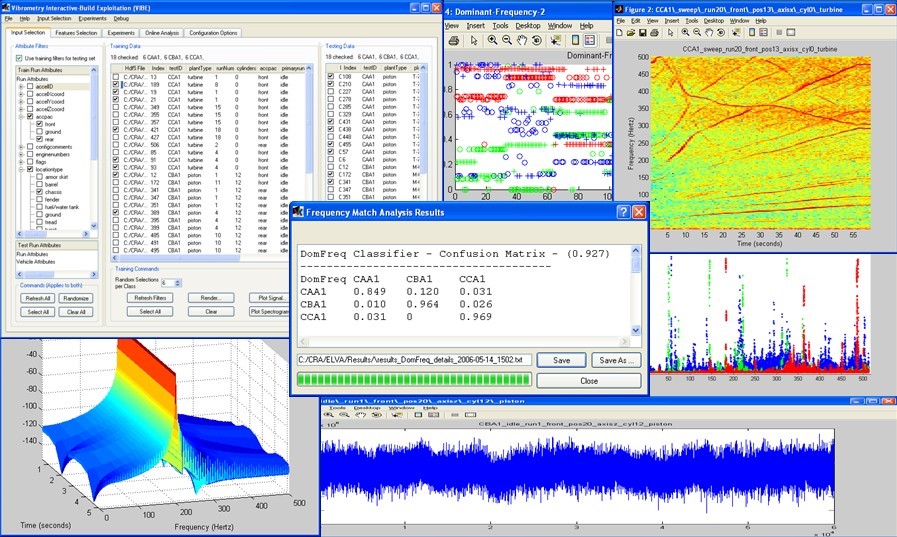
The Situation Laser vibrometry (LV) and micro-laser interferometer Doppler (MLID) sensors measure minute vibrations on the surface of an object from large standoff distances. Automatic target recognition (ATR) using imaging sensors is extremely sensitive to differences between operating conditions under which the algorithms were developed and the conditions under which the fielded algorithms are used. […]
Multi-modal Interface for Natural Operator Teaming with Autonomous Robots (MINOTAUR)
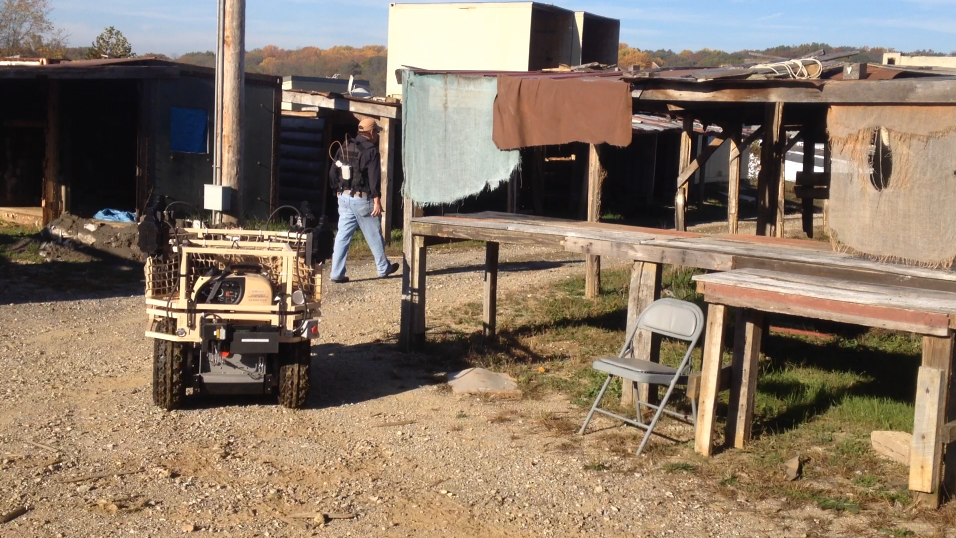
The Situation The Armed Forces need unmanned ground vehicles (UGVs) that can autonomously accompany a Warfighter or vehicle during maneuvers through complex environments. These UGVs will help solve logistical problems such as transporting more equipment and supplies that individual soldiers now carry in a backpack. A common problem for unmanned platforms is the need for […]
Spatially Produced Airspace Routes from Tactically Evolved Networks (SPARTEN)
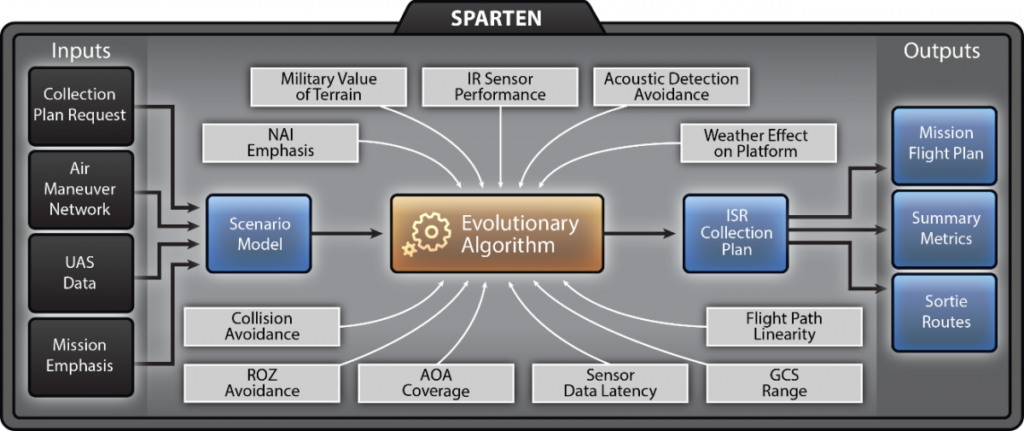
The Situation The dependability, persistence, and versatility of unmanned aerial systems (UAS) have made them indispensable assets to provide intelligence, surveillance, and reconnaissance (ISR) over the battlefield. As larger constellations of heterogeneous, multi-purpose UAS are tasked to perform more diverse missions in unpredictable, dynamic environments with more sophisticated sensors, they are transitioning from remote control […]
An Adaptable Toolkit for the Assessment and Augmentation of Performance by Teams in Real Time
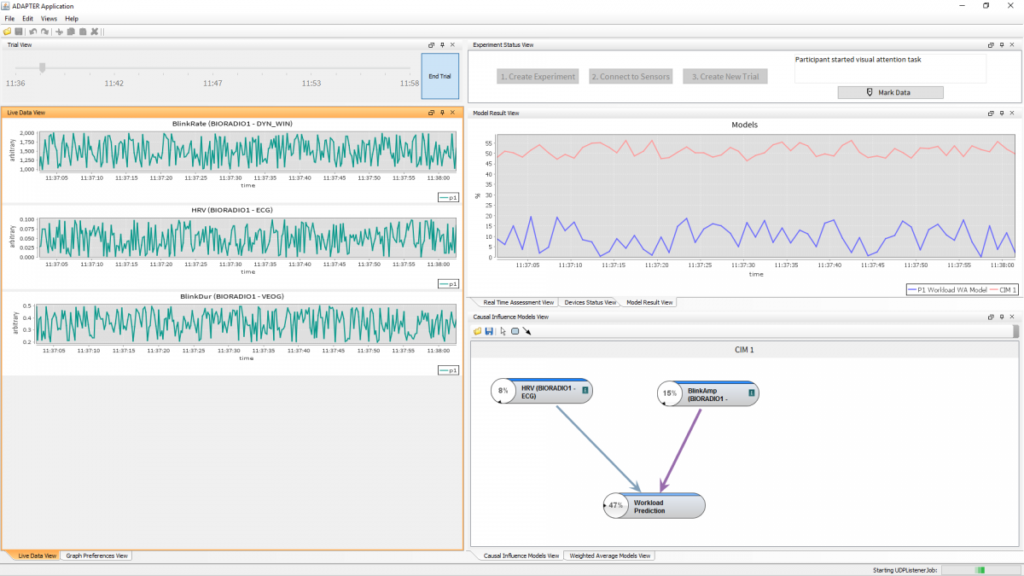
The Situation For teams to perform effectively, individuals must focus on their tasks, while simultaneously maintaining awareness of other team members. Researchers studying and attempting to optimize performance of team members and across entire teams use assessments of behavioral, neurophysiological, and physiological signals that correlate with individual and team performance. For example, a researcher may […]
Sonar Training, Motivation, Assessment, Tailoring, and Enhanced Remediation
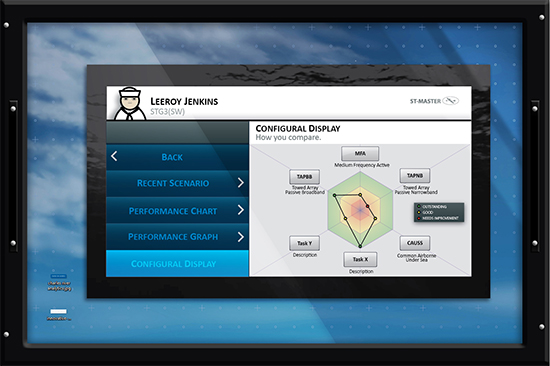
The Situation Anti-submarine warfare (ASW) is a vital strategic concern to the US Navy, since hostile submarines can pose serious threats to naval forces and seaborne lines of communication. The Navy has developed a system for conducting high-fidelity synthetic training to improve the sonar proficiency of ASW-capable surface ships, called the Surface ASW Synthetic Trainer […]
Crowd-sourced Formal Verification (CSFV) Integration
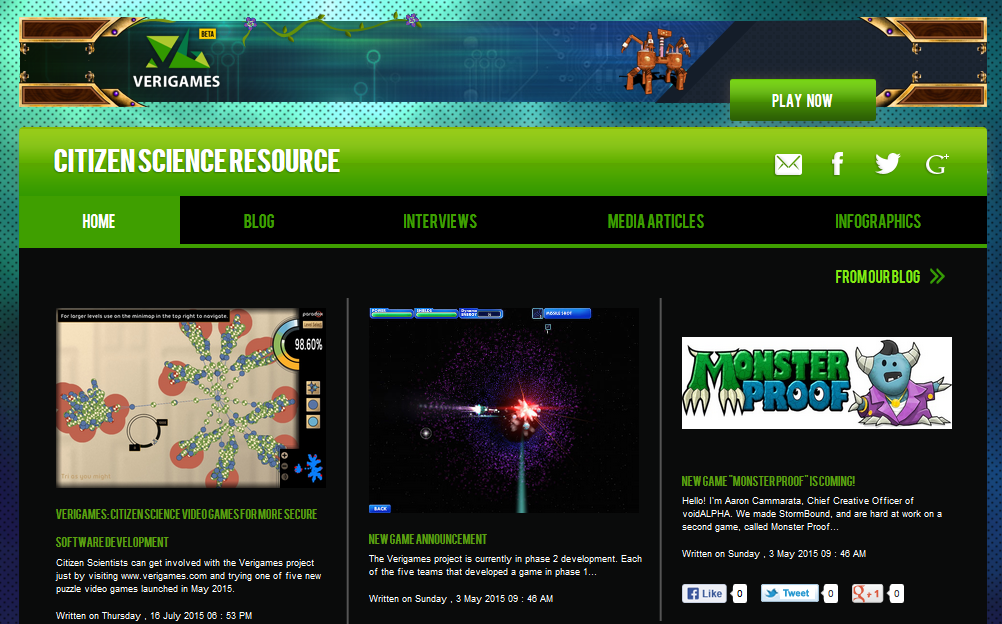
The Situation As developers for the Department of Defense (DoD) construct large software components and systems consisting of millions of lines of code, this software should go through formal verification (FV) to ensure that mission-essential software is free from disruptive errors and security vulnerabilities. Unfortunately there is a shortage of highly specialized FV experts to […]
Maintenance Training based on an Adaptive Game-Based Environment using a Pedagogic Interpretation Engine (MAGPIE)

The Situation The US Air Force instructs aircraft maintainers through a combination of live exercises and classroom training. These approaches can be costly and time consuming, and are limited in their ability to demonstrate a comprehensive range of realistic maintenance situations or to provide compelling, tailored training to individual students. In contrast, game-based training can […]
CYMOD/ Cyber Adversary Modeling and Simulation

The Situation The rapid increase in the number of connected devices in US military networks has vastly expanded the possible cyber attack surface. As modern cyber adversaries become more proficient and sophisticated, these network systems are increasingly vulnerable to cyber attacks. Private businesses regularly fall victim to cyber attacks as well, which inflict devastating damage […]
Trains of Thought
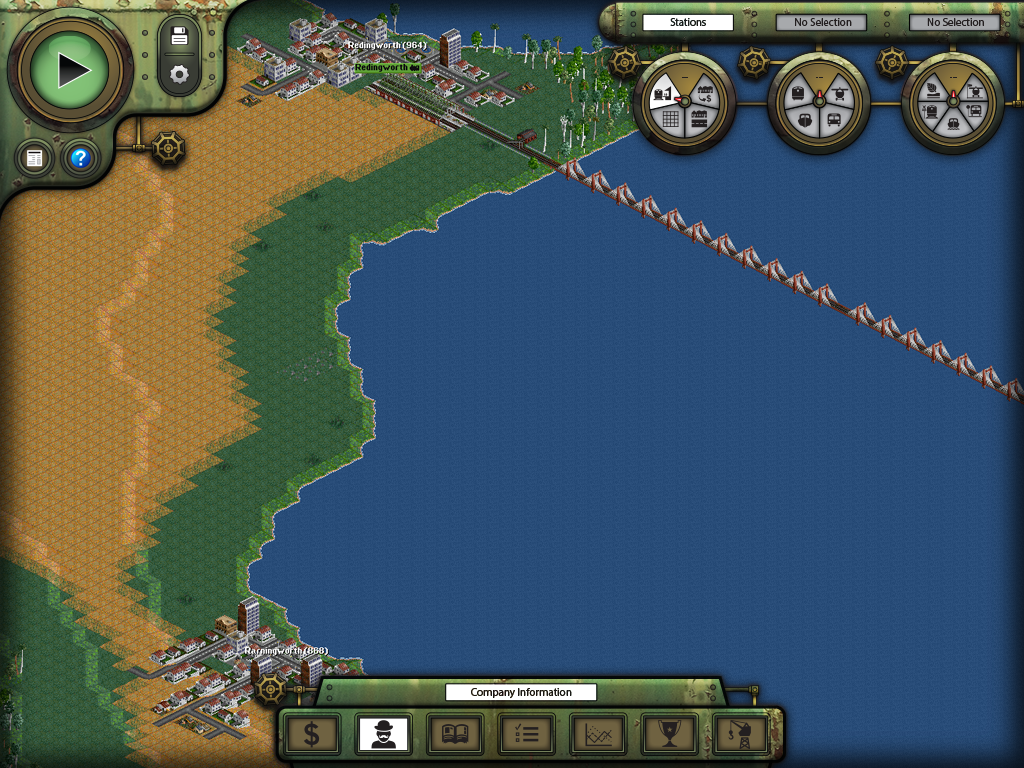
The Situation Science, technology, engineering, and mathematics (STEM) education for K-12 students in the United States is falling behind global standards (National Science Board, 2007; US Department of Labor, 2007), and current educational practices are not sufficiently preparing students to compete in the global economy. These challenges may ultimately limit American innovation and adversely affect […]
SHERLOCK/ A platform for prototyping solutions on physiological, neurological, and behavioral state

The Situation Across many careers, people face alternating periods of high and low attention and cognitive workload, which can result in impaired cognitive functioning and can be detrimental to job performance. For example, some professionals (e.g., firefighters, emergency medical personnel, doctors and nurses working in an emergency room, pilots) experience long periods of low workload […]
Stand-Off Multispectral Biometric Assay (SOMBA)
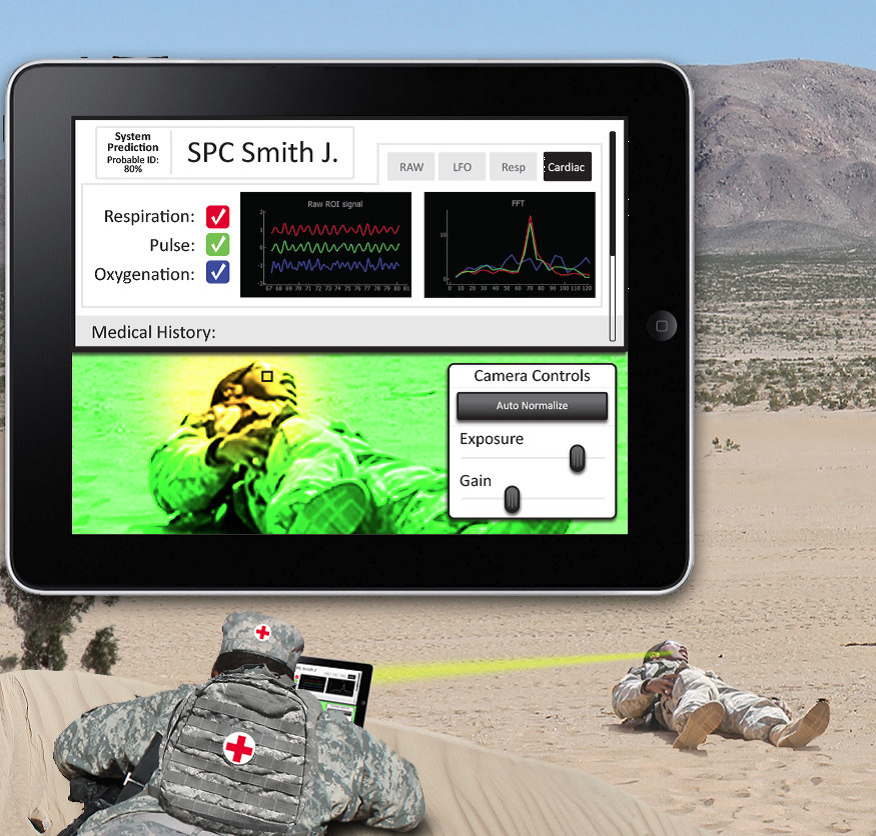
The Situation Neurophysiological techniques are the conventional methods used for state assessment, but they are expensive, obtrusive, and require training to use. Biometric methods are emerging that may also provide data to support estimation of operator state. Biometric techniques for sensing peripheral nervous system indicators (e.g., heart rate, blood pressure, and galvanic skin response) provide […]
Virtual Maintenance Trainer (VMT)
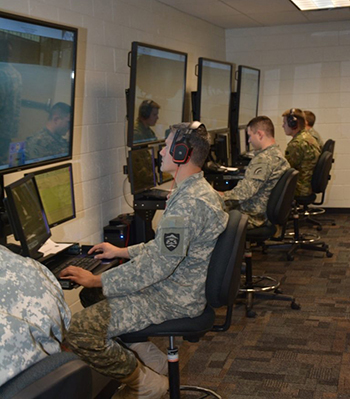
The Situation The Western Army National Guard Aviation Training Site in Marana, Arizona, trains maintenance workers to repair and maintain a fleet of UH-72A helicopters. Limited hardware resources made this training challenging, so the US Army decided to create a virtual maintenance trainer (VMT) that enables trainees to work on a realistic model of the […]
Rapid Ethnographic Assessment and Data Management Integration Toolkit (READ-IT)
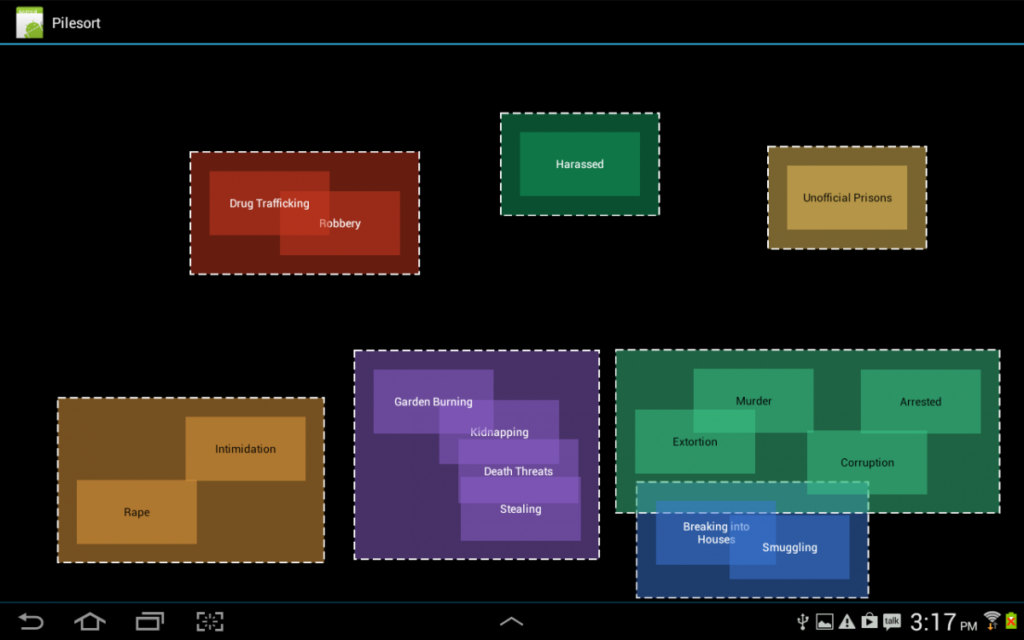
Socio-cultural factors are increasingly recognized as critical to effective military operations. Collection and analysis of socio-cultural data can improve understanding of the operational environment, as well as guide personnel during interactions with local populations. Unfortunately, it can be very difficult to quickly collect this data. This becomes even more difficult in denied, conflict, or high […]
Intuitive User Interfaces for Task-Tailored Planning
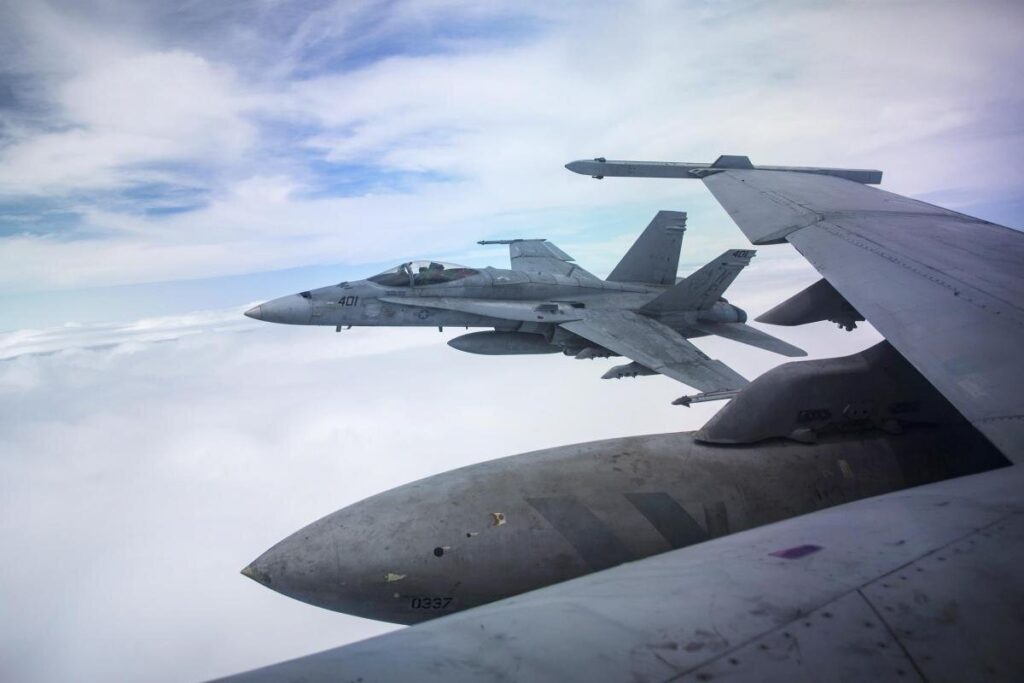
The Situation Powerful support tools have been developed to help Navy pilots plan and replan mission activities. Although these planning systems offer advanced functionality, they are typically plagued by user interfaces (UI) that are overly complex and unwieldy, which leads to significant cognitive work demands and underutilized functionality. Critically, these tools do not provide efficient, […]
Crowdsourcing using Intelligent Supervision to address Information Requirements in Crisis Situations

Marine Expeditionary Units (MEUs) are often first responders for such crises as natural disasters and regional instability. To respond effectively, MEUs must quickly and accurately analyze large amounts of information collected on the ground. Fortunately, crowdsourcing offers opportunities to efficiently leverage vast, knowledgeable, and unexploited resources in the form of local and military populations that […]
TOURNIQUET MASTER TRAINING/ A tourniquet technology training system

The Situation Battlefield medical treatment has advanced tremendously in recent years; this is exemplified by the development of Tactical Combat Casualty Care (TCCC), which emphasizes immediate attention to life-threatening conditions, such as airway blockage or fatal bleeding. Unfortunately, certain injuries, such as non-compressible hemorrhages in junctional or inguinal areas like the abdomen or pelvis, cannot […]
Virtual Interface for Real-Time User Control during Simulated Operations
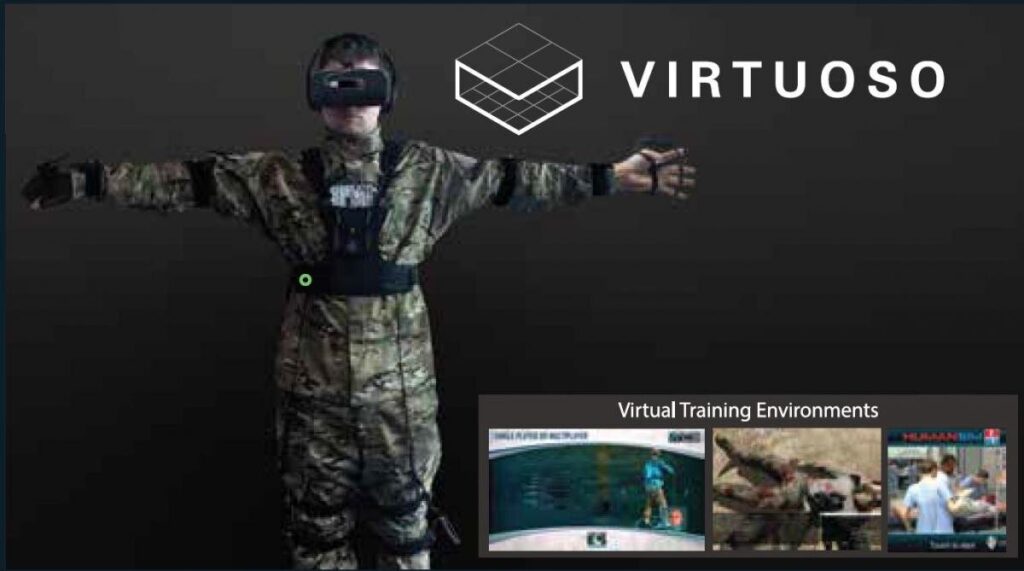
The Situation The military’s shift towards mixed reality, virtual reality, and augmented reality (MR/VR/AR) training in recent years has yielded safer training at a lower cost than live operations and a more immersive experience than traditional, two-dimensional displays and partial dome environments. “Although the benefits of these virtual environments are clear, supporting natural human interactions […]
Semi-Automated Processing of Interconnected Dyads Using Entity Resolution

The Situation Tracing the spread of infections is a critical task; every interaction may matter. During the past two decades, there has been a surge in the number of studies applying social network analysis (SNA) to the study of infectious disease transmission. The mapping of “risk potential networks,” in which individuals are connected by ties […]
Probabilistic Relational Inference Modeling for Enterprises

The Situation Insider threats are individuals within an organization enacting harmful behaviors—behaviors caused by espionage, sabotage, or even ignorance. The Intelligence Community needs to forecast the accuracy and sensitivity of different insider threat detection systems. But current detection systems cannot deliver this information in large enterprise organizations because they fail to adequately model and account […]
Follow-Me With Follow-Me, unmanned ground vehicles (UGVs) become true support agents on human-robot teams

The Follow-Me human-machine interface lets a UGV accompany a human operator, like a fellow squad member, through challenging outdoor environments. It responds to speech and gesture commands, providing verbal and non-verbal feedback, maintaining formation, and avoiding obstacles along the way. The interface works with onboard autonomy software so the UGV can act both as a scout […]
Multimodal Alerting Interface with Networked Short-range Transmissions

The Situation Connected vehicle and infrastructure technology can revolutionize safety and efficiency of roadway transportation. For this reason, it is seeing increased adoption and technology advancement in the automotive industry. “For this technology to truly realize its potential, it must provide connectivity for all shared roadway transportation options,” explained Dr. Michael Jenkins, Senior Scientist at […]
Marine Testing Services

Charles River’s Marine Systems Test Facility is located on Block Island Sound in Wakefield, Rhode Island. It provides immediate, year-round access to Navy-approved littoral testing waters in the Point Judith Harbor of Refuge, Narragansett Bay, Block Island Sound, and beyond. Testing services include assembly, transport, deployment, operation, evaluation, and maintenance of marine systems, including: […]
Climatological Observations for Maritime Prediction and Analysis Support Service

“With COMPASS, operational planners and decision-makers can access more reliable and longer-term weather and climate predictions.” – Alison O’Connor, Technical Lead Combining Long-Range Forecasts COMPASS successfully combines long-range forecasts developed by international modeling centers to generate a unified forecast for a specific time period, region, and set of environmental conditions that outperforms other available forecasts. […]
Explainable Artificial Intelligence

Our CAMEL approach supports dialogue between humans and artificial intelligence systems. “In CAMEL, we use causal modeling to identify which factors most influence the output of complex, AI-driven systems. Then, our intuitive UI adds text and visual explanations to the model so users can understand why it produced the output, and whether it is appropriate […]
PRINCESS Demonstrates the Latest in Autonomous Naval Technologies

Charles River’s PRINCESS incorporates machine learning and probabilistic modeling to build adaptable software systems Sailors move a REMUS UUV during a research and training exercise [Defense.gov photo] “We envision military software that can make significant adaptations on its own. With PRINCESS, we are closer to software that can quickly and autonomously adapt to changes in its […]
Probabilistic Model-Based Programming Techniques for Prediction, Analysis, and Control
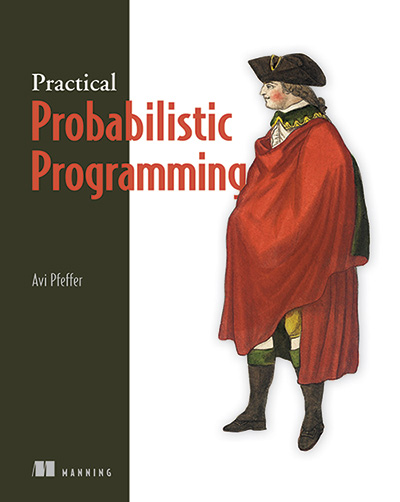
System modelers can create better designs faster with ProbSysML “We’re helping engineers create system models they can use to control and reason about the operating behavior of systems in uncertain environments. ProbSysML provides probabilistic extensions to the standard Systems Modeling Language and compiles to our Figaro™ probabilistic programming language.” ~ Dr. Avi Pfeffer, Chief Scientist […]
SHEPARD uses smart devices—like a watch—to make communication with military robots easy
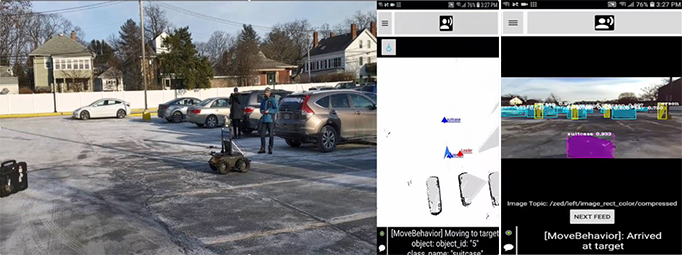
“Our approach to managing UxVs is in stark contrast with how robot operators currently direct unmanned platforms—they use cumbersome, hands-on, head-down controllers. Our goal with SHEPARD is to develop controls that let robots seamlessly integrate into human teams.” – Camille Monnier, SHEPARD Principal Investigator Unmanned vehicles (UxVs) are vital to military operations, although their widespread integration […]
Our GeMFIRE Live, Virtual, Constructive 5th generation pilot training solution integrates within USAF simulation and training environments

A recent AFRL LVC event incorporating the GeMFIRE system. GeMFIRE helps ensure the readiness of 5th gen USAF pilots by delivering a cost-effective, pilot-approved, medium-fidelity environment that addresses emerging training gaps. “The USAF and our coalition partners must comprehensively train and familiarize next-generation pilots with the advanced capabilities and unique pilot-vehicle interfaces coming online in […]
CAPT PICARD can inform astronauts and Mission Control when cognitive performance begins to deteriorate, averting performance-related crises during a space mission
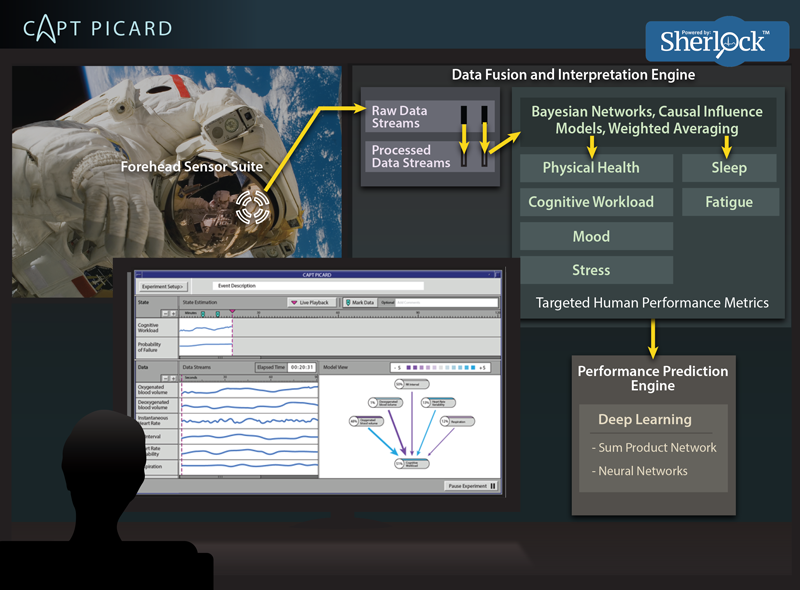
CAPT PICARD is built on Sherlock™, our open and extensible software and hardware platform that provides a unified, end-to-end solution “Under CAPT PICARD, we’re refining, evaluating, and validating an unobtrusive system to measure, assess, and predict cognitive workload.” – Dr. Bethany Bracken, Principal Investigator on our CAPT PICARD system Charles River Analytics developed a system for Cognitive […]
With VIRTUAL-C, lab personnel receive hands-on training in virtual environments
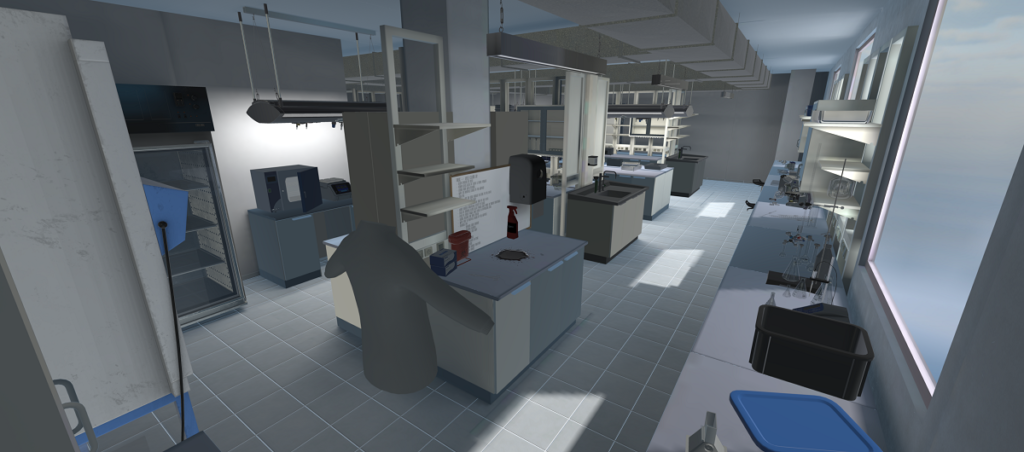
“VIRTUAL-C engages students in a deep and meaningful VR lab experience. With VIRTUAL-C, Public Health Laboratory professionals can learn and retain critical skills—all in a safe, realistic, and cost-effective virtual environment.” ~ Arthur Wollocko, VIRTUAL-C Principal Investigator and Software Lead Despite their critical role in the detection, prevention, and control of disease, opportunities for Public Health […]
COLBERT provides LVC performance-based training tools for multi-domain operations
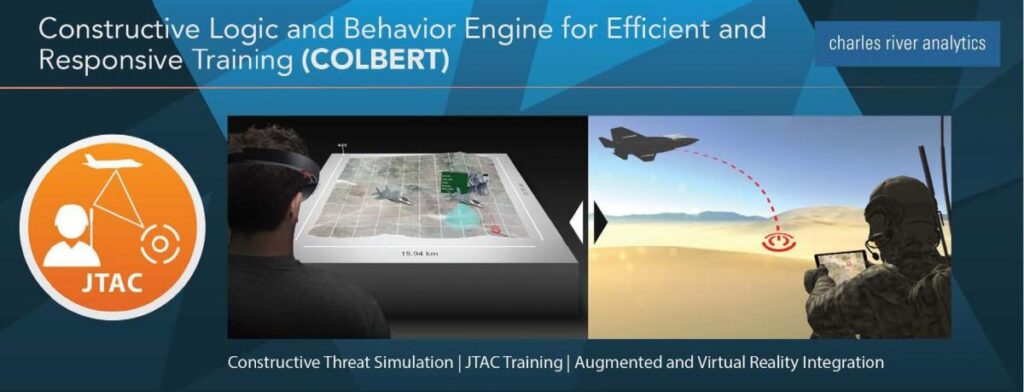
“Our COLBERT simulation tools support virtual reality and mixed reality scenarios for immersive JTAC training.” – Dr. Martin Voshell, COLBERT Principal Investigator Currently, simulators used for Joint Terminal Attack Controller (JTAC) Close Air Support (CAS) training are difficult to manage and expensive to maintain. These challenges can result in ineffective training. To help the US […]
DREEMS helps model impacts of stressors on Warfighter performance

With DREEMS, mission planners, analysts, and researchers can understand and model the impact of stressors on a Warfighter’s performance. Their insights can ultimately improve Warfighter lethality, survivability, and operational effectiveness on the battlefield. Paratroopers on a 17-hour flight trying to get some pre-jump rest on the aircraft. (Image: Defense.gov) “The Army is working with […]
